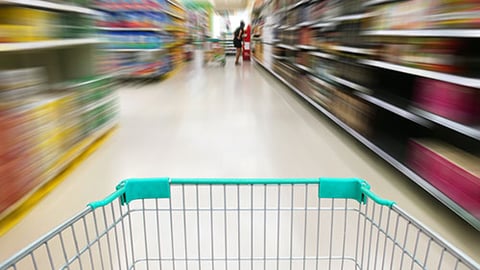Nielsen IDs New Spending Groups for Holidays
As travel constraints and health rules force smaller gatherings this holiday season, spending patterns will no doubt be different compared with years past. With this in mind, Chicago-based Nielsen has identified five groups of shoppers that will emerge during the 2020 holidays.
The five groups are:
- Constrained and Restricted: Already financially constrained or newly constrained, having suffered income loss as a result of COVID-19, these consumers have less money to spend. Due to local restrictions to travel, business openings and social interaction, these consumers also have less freedom to physically congregate and shop for their holiday needs. As a result of limited physical shopping, they may have less opportunity to shop around for the best deals and assortment.
- Constrained but Free: Already financially constrained or newly constrained, having suffered income loss as a result of COVID-19, these consumers have less money to spend. They are likely to have a savings mindset as they prepare for the festive season, but because they have no physical restrictions, they will have more freedom to celebrate with others and to seek the right products and price points to suit their needs.
- Cautious Middle: Not yet impacted financially, and their celebrations unlimited by physical restrictions, these consumers hold fears for what might be in store in the near future. They're more likely to be cautious spenders and may prioritize occasion and gift giving with only those closest to them.
- Insulated but Restricted: These consumers aren't financially impacted by COVID-19, but their festivities will be affected by local physical restrictions. Smaller gatherings may curtail normal spending and encourage self-indulgent celebrations.Financial flexibility will drive these consumers to splurge in some ways to compensate for experiences that are no longer possible (e.g., travel).
- Insulated and Free: These consumers aren't financially impacted by COVID-19, but, while their own social interactions may not be restricted, their typical celebrations may be affected by those unable to be with them this year. These consumers are likely to spend the most freely and to exhibit pre-COVID-19 holiday behavior. Many will be compensating for luxuries forgone earlier in the year, and may be more inclined to help those less fortunate, especially those close to them.
As plans change on a daily basis related to COVID-19 developments, it will be imperative that companies align their plans with the new circumstances that consumers find themselves in, Nielsen advised.
The data firm suggested the following strategies for companies tailoring their seasonal offerings:
Basket Reset – Redefine What’s Festive: Holiday spending and gift etiquette will be redefined based on shifts in what and who will be considered essential to each consumer. To meet this shift, look at the broadened assortment of what consumers might consider “giftable” as an opportunity rather than a limitation. The door is open for non-festive categories to perform strongly this season. From a necessity that can no longer fit the budget, to a product that has been harder to get in stores this year, the definition of a “gift” will look very different this year.
Specific to the grocery industry, Nielsen predicts that homemade gifts and cooking will thrive this holiday season. The data firm reported that bake-it-yourself ingredients such as yeast and baking mixes have grown impressively across all outlets in the four weeks ended Sept. 26, at 81.1% and 12.8%, respectively.
Homebody Reset – Think Instant and Distant: Gatherings will be smaller, more intimate and many will be planned at the last minute, according to the latest local COVID-19 guidelines. The home will be central to many festive celebrations as a result. Constrained consumers will seek to limit their out-of-home expenses by relying on home cooking and homemade gifts where possible. On the other hand, insulated consumers will be looking for opportunities to splurge and treat themselves with premium product offerings and at-home dining experiences. Companies can cater to new needs for instant or distant gifting by innovating the ways in which a product or service can be shared from the comfort of home. Offering the addition of personalized cards to electronic orders, or being able to digitally send a product voucher to a loved one, could serve as brand differentiators this year.
Rationale Reset – Engage with Empathy: Traditions are being rewritten, and in light of shifting holiday norms, consumers may choose to spend more on themselves this year. Consumers are reworking their budgets and adapting to changes in local living restrictions. In doing so, they are constantly adjusting the criteria for what makes it on their holiday shopping lists. According to Lauren Fernandes, director of the Nielsen Intelligence Unit, “Showing how your product or service can contribute to a celebration, even if it’s focused on the self or a single household, can help busy consumers make the trade-offs they need to.” Aligning to the need for “just-in-case” solutions may be one way to capitalize on the changing rationale behind holiday purchases, she added.
Affordability Reset – Convert Impulsivity: Online shopping will power more holiday consumer behaviors than ever before. It has already been a huge year for e-commerce growth, and even ahead of seasonal holiday demand, online buying behavior has continued to thrive in markets around the globe. Constrained consumers will be the most selective, using online shopping to search for the best prices without leaving home. Meanwhile, insulated consumers will rely on online sales events to provide maximized value for luxurious and indulgent festive purchases. Given limited physical touchpoints with consumers, it’s important to create spontaneity, even in an online environment. Whether encouraging giving back to those less fortunate on the checkout page, or offering the addition of free samples to entice secondary purchases, there are many ways to trigger impulse purchases online.






